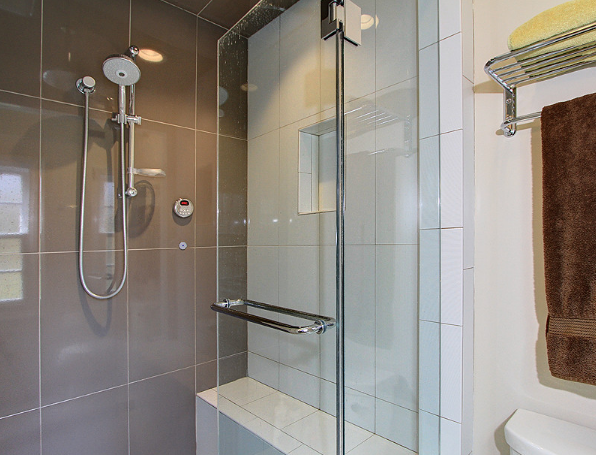 You’ve seen steam showers at health clubs or spas, but now you’re thinking of installing one in your bathroom. Here are six considerations to keep in mind before that steam generator starts pumping.
You’ve seen steam showers at health clubs or spas, but now you’re thinking of installing one in your bathroom. Here are six considerations to keep in mind before that steam generator starts pumping.
Where Will It Go?
Steam showers need ample room for the enclosure, the controls, and the showerhead(s). The cure for a crowded steam bath is not a smaller unit with fewer amenities, but a larger space with square footage to spare. If possible, choose a location where you can install a tile bench inside the team that’s a very comfortable place to relax when your pores are open and leave plenty of elbow room around it. Consider building an entire wet spa area with separate zones featuring lavatories, a steam shower, and a whirlpool bathtub.
Will It Meet the Code?
Steam showers come in various styles and can be engineered to fit into your existing bathroom, adding a luxurious spa look and feel at the same time. However, make sure the total area is large enough to meet any building or local codes. Your builder should know what’s required; they likely want you to hire an experienced installer anyway. As for local guidelines: ask your city builder’s permit office for specifics.
Can You Do It Yourself?
Steam showers are complex fixtures that require a lot of plumbing expertise to get right. So, unless you’re an experienced plumber, have the job done by a professional. It may seem expensive upfront: but if you make even one mistake and end up with leaks in your walls or ceiling, you’ll spend much more than any savings in your pocketbook. While most steam shower enclosures can be installed by two people with basic skills like carpentry and tile-setting, detailed instructions and diagrams are included with each unit. Consider having them on hand before you start.
High Heat, High Humidity
Steam showers are not for everyone. If you have respiratory problems or other medical conditions that leave you particularly susceptible to allergies, steam may worsen your symptoms. You’ll also want to make sure the enclosure has an effective ventilation system in place. Every steam generator creates moist air when in operation. Still, some are designed to recirculate the humid air back into the bathing chamber with no exit vents at all – not a good idea if you’re breathing easier with fresh air! The best solution is a system that draws steam into the generator, then pushes it up through a chimney where it can dissipate safely out of reach above your shower head. That way, you get all the advantages of steam but none of the health hazards and you can leave the enclosure door open for a comfortable environment.
Safety First!
Remember: steam bathroom fixtures (including generators and enclosures) are very hot! Ensure everything is installed correctly when building a steam shower and there is adequate insulation to minimize heat loss during use. Otherwise, it will take much longer for your generator to heat the air. And before anyone enters: check exterior surfaces and seams for signs of damage (including water leaks), then test each fixture with a lighted match or candle. If anything hisses or sputters at all, stop using it immediately. Wait until an authorized service technician makes repairs before using it again. Not only will you be safe from electrocution if there’s a leak in the wiring, but you’ll also avoid the chances of a fire from damaged insulation or electrical shorts.
When installing a steam shower, one should consider style/design, whether it will meet codes, whether they can do it themselves, heat and humidity issues associated with steam showers, safety first, & additional tips. A person needs to make sure their chosen steam shower is installed correctly by a professional and that the installation meets any building codes necessary.






